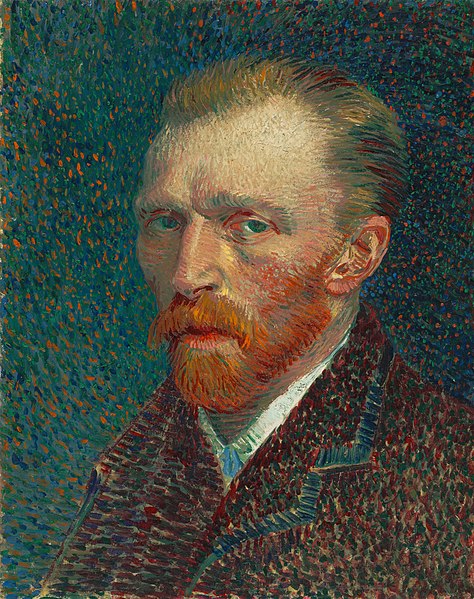
Born: 30 March 1853, Zundert
Died: 29 July 1890 (aged 37)
Period: Post-Impressionism
The Life of Vincent van Gogh
Vincent van Gogh (1853–1890) was a Dutch post-Impressionist painter whose work, notable for its beauty, emotion, and color, highly influenced 20th-century art. He created more than 2,100 artworks, including around 860 oil paintings, most of them in the last two years of his life. Van Gogh’s art became famous after his death and is celebrated for its bold, expressive brush strokes that contributed to the foundations of modern art.
Early Life Vincent van Gogh was born on March 30, 1853, in Groot-Zundert, Netherlands, to Theodorus van Gogh, a pastor, and Anna Carbentus van Gogh. He was raised in a religious and cultured environment, being the eldest of six children. Van Gogh was initially employed by Goupil & Cie, an art dealership where his uncle was a partner, working in branches in The Hague, London, and Paris. However, disillusioned by the commercial aspect of art, he left the job in 1876 to take unpaid work as a missionary in a poor mining region in Belgium, a decision that marked the beginning of his journey towards becoming an artist.
Artistic Career Van Gogh decided to become an artist in 1880, encouraged by his brother Theo, who provided financial support. Initially, his work comprised somber tones and depicted scenes of peasant life, influenced by his stay in Belgium. His early pieces, like “The Potato Eaters” (1885), show his interest in capturing the hardships of humanity.
His style underwent significant changes after moving to Paris in 1886, where he was influenced by Impressionism and Neo-Impressionism, and the works of artists like Claude Monet and Paul Gauguin. This period marked a transition to brighter colors and a lighter mood in his paintings.
In 1888, van Gogh moved to Arles in southern France, where he created many of his masterpieces, including “Sunflowers,” “The Starry Night,” and a series of self-portraits. This period was also marked by his deteriorating mental health and the famous incident where he cut off his left earlobe after a confrontation with Gauguin, who had come to stay with him.
Mental Health and Final Years Van Gogh’s mental health continued to decline, leading to his admission to the Saint-Paul-de-Mausole asylum in Saint-Rémy-de-Provence in 1889. Despite his illness, he continued to paint and produced some of his best-known works during this time. In May 1890, van Gogh moved to Auvers-sur-Oise under the care of Dr. Paul Gachet, a homeopathic doctor and artist. On July 27, 1890, van Gogh shot himself in the chest with a revolver and died two days later, on July 29, 1890, at the age of 37.
Legacy Van Gogh did not achieve fame during his lifetime, selling only one painting, “The Red Vineyard.” However, his art gained posthumous recognition, thanks to the efforts of his sister-in-law, Johanna van Gogh-Bonger. Today, Vincent van Gogh is celebrated as a pioneering figure in the history of Western art, known for his contributions to the foundations of modern art. His works are admired for their emotional honesty, bold color, and innovative techniques, capturing the imagination of audiences worldwide.
Vincent van Gogh’s Notable Works
Vincent van Gogh, one of the most influential figures in the history of Western art, produced a vast number of works that are celebrated for their emotional intensity, vibrant colors, and innovative techniques. Here are ten of van Gogh’s most famous and enduring works:
- “Starry Night” (1889) – Painted during his stay at the asylum in Saint-Rémy-de-Provence, this masterpiece is renowned for its swirling night sky over a quiet village, reflecting van Gogh’s fascination with the infinite.
- “Sunflowers” (1888) – A series of paintings that depict sunflowers in a vase, showcasing van Gogh’s unique ability to convey beauty and emotion through bold colors and simple subjects. The most famous of these is housed in the Van Gogh Museum in Amsterdam.
- “The Café Terrace at Night” (1888) – This painting captures a night scene of a café in Arles, notable for its vibrant colors and the absence of black, showcasing van Gogh’s innovative use of color and light.
- “Irises” (1889) – Painted during his time at the asylum, this work is one of van Gogh’s most celebrated floral compositions, full of dynamic movement and rich coloration.
- “The Bedroom” (1888) – A depiction of van Gogh’s bedroom in Arles, this painting is admired for its comforting simplicity and expressive use of color to convey tranquility.
- “Wheatfield with Crows” (1890) – Often interpreted as one of van Gogh’s final works, this painting is noted for its dramatic, ominous sky and the path that seemingly leads to nowhere, symbolizing, perhaps, the artist’s troubled state of mind.
- “The Night Café” (1888) – In this work, van Gogh portrayed the interior of a café in Arles, using exaggerated colors and perspectives to convey the atmosphere of what he called “a place where one can ruin oneself, go mad, or commit a crime.”
- “Self-Portrait with Bandaged Ear” (1889) – One of many self-portraits by van Gogh, this painting is a poignant reflection on his mental state following the incident with his ear, showing the artist with a bandaged ear and a somber expression.
- “Almond Blossoms” (1890) – Inspired by the birth of his nephew and namesake, Vincent Willem, this series of paintings celebrates new life and hope, with the almond blossoms set against a clear blue sky.
- “Wheat Field with Cypresses” (1889) – Painted during his stay at the asylum, this vibrant work is one of van Gogh’s most powerful landscapes, characterized by swirling clouds, lush fields, and towering cypresses.
Van Gogh’s work, characterized by its emotional depth, beauty, and innovation, has had a profound impact on art, making him one of the most beloved artists in history. His paintings continue to captivate viewers with their intense expression and bold use of color.